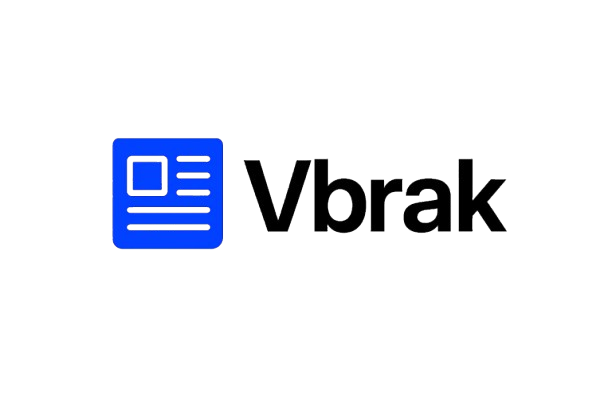Introduction: Who is Broderick Bevineau?
Broderick Bevineau is one of those professionals in the IT world whose career reflects a blend of technical expertise, leadership ability, and an eye for innovation. While he may not be a household name, within certain professional and community circles, his reputation continues to grow. He is recognized for his ability to adapt across evolving technologies and for leading teams in a way that emphasizes both efficiency and ethical responsibility.
When you hear his name, it often comes attached to conversations about identity management, enterprise systems, and the way technology can be used to not only streamline organizations but also positively influence people. His story is less about flashy titles and more about building sustainable solutions, helping organizations scale, and balancing technical skill with a human touch.
The purpose of this article is to explore Broderick Bevineau’s path in IT, from his foundation years to his current role as a leader, while also highlighting the lessons that his journey can offer to others in the field.
Early Career and Technical Foundation
Building a Strong Base
Every accomplished professional starts with a foundation, and for Bevineau, that meant diving into the world of enterprise IT systems. His areas of expertise include a wide range of technologies such as Microsoft Exchange, SharePoint, Lotus Domino/Notes, Azure Active Directory, Office 365, and mobile device management platforms. These tools represent decades of IT evolution—from legacy systems to cutting-edge cloud platforms.
It’s clear that he made an intentional decision early in his career to not be limited to just one platform or specialty. Instead, he cultivated versatility, learning both older enterprise systems and the latest cloud-based innovations. This adaptability gave him the credibility to handle complex migration projects and support users during times of transition.
Lessons from Legacy Systems Broderick Bevineau
Working with legacy systems like Lotus Notes or Domino is never glamorous, but it builds grit. Those platforms taught countless IT professionals the importance of data integrity, security, and user adoption. For Bevineau, navigating these systems likely sharpened his troubleshooting skills and made him appreciate the challenges of large-scale IT environments.
These early experiences provided a laboratory of sorts. Broderick Bevineau They allowed him to test theories, make mistakes, and learn resilience in high-pressure situations where downtime was not an option. Anyone who has supported enterprise systems knows that you don’t just learn the technology—you also learn patience, communication, and responsibility.
Moving Into Cloud and Modern Tools
As technology advanced, so did Bevineau. His work with Az Broderick Bevineau ure AD, Office 365, and mobile device management solutions shows that he embraced the future rather than resisting change. Shifting into these areas required retraining, curiosity, and a willingness to abandon comfort zones. That mindset is critical for anyone hoping to stay relevant in IT, and it speaks volumes about his commitment to continuous growth.
Career Highlights and Contributions
Leadership in IT Broderick Bevineau
Broderick Bevineau’s role as an IT Manager places him in a space where he is responsible not only for technology but also for people, processes, and strategic vision. An IT Manager has to balance budgets, manage vendor relationships, ensure security compliance, and still deliver technology that empowers employees rather than frustrates them.
In such a role, he would have overseen migrations, infrastructure upgrades, and the rollout of tools that organizations rely on daily. It is here that his earlier technical background pays off—because you can only lead effectively if you understand the challenges your team faces on the ground.
Recognition and Reputation Broderick Bevineau
Over time, Bevineau has been profiled as a leader with a blend of vision and practical know-how. Colleagues and observers have noted his ability to bring ethical considerations into decision-making. In an industry often criticized for chasing profit or convenience at the expense of people, he represents a more balanced approach.
Rather than framing IT as just servers, passwords, and cloud subscriptions, he emphasizes its role in enabling collaboration, protecting privacy, and keeping organizations resilient. That reputation has helped distinguish him as someone who doesn’t just manage technology—he manages impact.
Community Involvement
What also stands out is his presence in community and mentorship spaces. At one point, his name appeared in association with youth mentorship and community leadership initiatives. This suggests that his influence is not confined to corporate IT but extends to building people outside of office walls. That dual presence—technical and community-oriented—paints a fuller picture of his character.
Style, Philosophy, and Leadership Approach
Lifelong Learning
Broderick Bevineau’s career arc makes it clear that he values lifelong learning. Technology never stops evolving, and neither has he. By moving from older systems into the latest cloud-based platforms, he has shown that curiosity and adaptability are non-negotiable traits for long-term success in IT.
This approach also signals humility. Leaders who believe they already know everything eventually fall behind. Leaders who stay curious inspire their teams to do the same, creating a culture of growth rather than stagnation.
Balancing Vision and Practicality Broderick Bevineau
One defining trait of effective IT managers is their ability to balance vision with execution. It’s one thing to dream about migrating everything to the cloud or deploying Broderick Bevineau the newest tool—it’s another to make it work with limited budgets, legacy dependencies, and real-world user resistance. Bevineau’s portfolio suggests that he operates in this space, guiding organizations forward without ignoring the constraints they face.
This balance is what separates leaders from dreamers. Vision without execution frustrates teams, while execution without vision leaves organizations stuck in the past. His leadership style seems to combine both in a practical, steady way.
Ethical and People-Centered Leadership
Another recurring theme is ethics and purpose. Instead of framing IT purely as a set of technical solutions, Bevineau emphasizes its role in respecting privacy, protecting security, and enabling people. This people-first mindset is increasingly rare in an industry where efficiency often overshadows empathy.
By framing technology decisions around human impact, he not only builds trust with stakeholders but also creates more sustainable solutions. Systems designed with users in mind are more likely to succeed, and leaders who put people first tend to build stronger, more loyal teams.
Challenges and Lessons
Navigating Rapid Change
One challenge for any IT leader is keeping up with rapid change. Today’s tools may be tomorrow’s obsolete platforms. Leaders like Bevineau must constantly evaluate whether to adopt new solutions, maintain existing systems, or phase out legacy tools. This balancing act is never easy, and it requires a steady hand.
Breadth Versus Depth
With a wide array of technologies under his belt, one potential tension is balancing breadth with depth. IT leaders often face the challenge of being generalists while still maintaining credibility in technical conversations. Bevineau’s career shows that breadth can be an advantage when combined with a solid foundational depth.
Leading Beyond Technology
Perhaps the most subtle challenge is shifting from a purely technical role into a leadership role. It’s no longer enough to be the smartest engineer in the room—you must also manage budgets, mentor people, resolve conflicts, and think strategically. For Bevineau, making this transition successfully is part of what defines his career.
Insights for Aspiring Professionals
- Invest in a Strong Foundation: Start with mastering core systems, even if they are not glamorous. Those skills become the backbone for leadership later on.
- Stay Adaptable: Be willing to pivot into new technologies. Cloud, identity, and mobility are examples of areas that now define modern IT.
- Lead with People in Mind: Technology is for people. Leaders who remember this build solutions that last.
- Balance Vision and Reality: Dream big, but plan realistically. Execution is just as important as innovation.
- Never Stop Learning: Technology evolves constantly, and so should you.
Conclusion: The Ongoing Journey
Broderick Bevineau’s story is a reminder that IT leadership is about more than systems and servers. It’s about people, adaptability, and vision. From his technical beginnings with legacy platforms to his current leadership roles, he has consistently demonstrated the importance of staying curious, balancing vision with practicality, and putting people at the center of every decision.
His journey shows that great IT leaders are not just technicians or managers—they are lifelong learners, mentors, and ethical guides. For anyone looking to grow in the world of technology, his example offers a roadmap that blends technical mastery with human-centered leadership.

